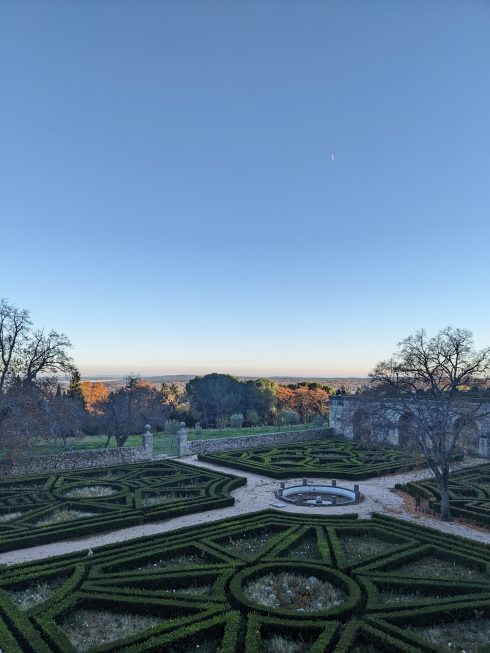THIS stunning monastery near Madrid was once called the eighth wonder of the world and it’s still well worth a visit.
If you have a free day while visiting Madrid, the city is a great jumping off point for many fascinating spots.
While Toledo and Segovia are popular options, more visitors are flocking to the small town of San Lorenzo de El Escorial.
READ MORE: Must visit: The 100-year-old train station in Spain that’s been turned into an award-winning hotel

Photo: The Olive Press
Although there isn’t much to see in the town itself, the monastery, El Escorial, paints a detailed picture of Spain’s history set against manicured gardens and green fields.
The easiest way to get to the site is by bus.
Take the route 664 bus, which leaves you about 200 metres from the monastery.
You can also go via train, but this leaves you about a 1km walk away downhill from the monastery entrance.

Photo: The Olive Press
Once called the eighth wonder of the world, the monastery is an imposing building which has borne witness to much of Spain’s tumultuous history.
Originally built as a royal residence for King Philip II in 1563, it is the largest renaissance building in the world and was declared a UNESCO World Heritage site in 1984.
It was designed by Juan Bautista de Toledo, who also worked on St Peter’s Basilica in Rome.
Inside you’ll find a monastery, basilica, royal palace, pantheon, library, museum, university, school, and hospital.
It’s worth dedicating a few hours to just wandering around the monasteries’ art laden walls and neverending corridors.
One of the highlights is descending into the huge royal crypts with their hundreds of marble tombs and impressive mausoleums.
However, my favourite part of the monastery was the impressive library.
READ MORE: Five stunning National Parks in Spain that come alive in the spring

Photo: The Olive Press
Worthy of any fantasy novel, the wood panelled walls and sistine chapel-esque roof protect centuries old books, globes and artefacts.
After exploring the building, take a wander around the intricate hedges of the surrounding gardens before leaving the main complex.

Photo: The Olive Press
In front of El Escorial, you will find plenty of paths tracing through fields and along rows of huge trees.
Wander down to the Casita del Infante, a smaller palace with impressive gardens.
The best time of year to visit is autumn, when the landscape is punctuated by orange, red and yellow hues as the leaves change colour.
Spend some time wandering the rows of trees and listening to the leaves fall to immerse yourself in the autumn spirit.
READ MORE: ‘I took the ferry from Spain to Morocco to explore the North African country- these are my top tips’

Photo: The Olive Press
If you fancy a rest and a bite to eat, there is a cafe in the gardens but you can also head into the town to grab more traditional dishes like cocido.
From the monastery, head up Calle Floridablanca, passing by historic buildings like the royal stables and workshops.
Along the way, you’ll find stalls selling refreshing horchata and ice creams.
Then, pick one of these parallel streets to explore the many gift shops selling sweets, ceramics, books and antiques: Calle Reina Victoria, Calle del Rey and Calle Juan de Leyva.
If you have extra time, check out the Cocheras del Rey, a historic transport museum.
To find a restaurant with great views of the monastery, go via Calle Patriarca to come out on Calle Floridablanca.
Fuel up on delicious local dishes before heading back to Madrid.









